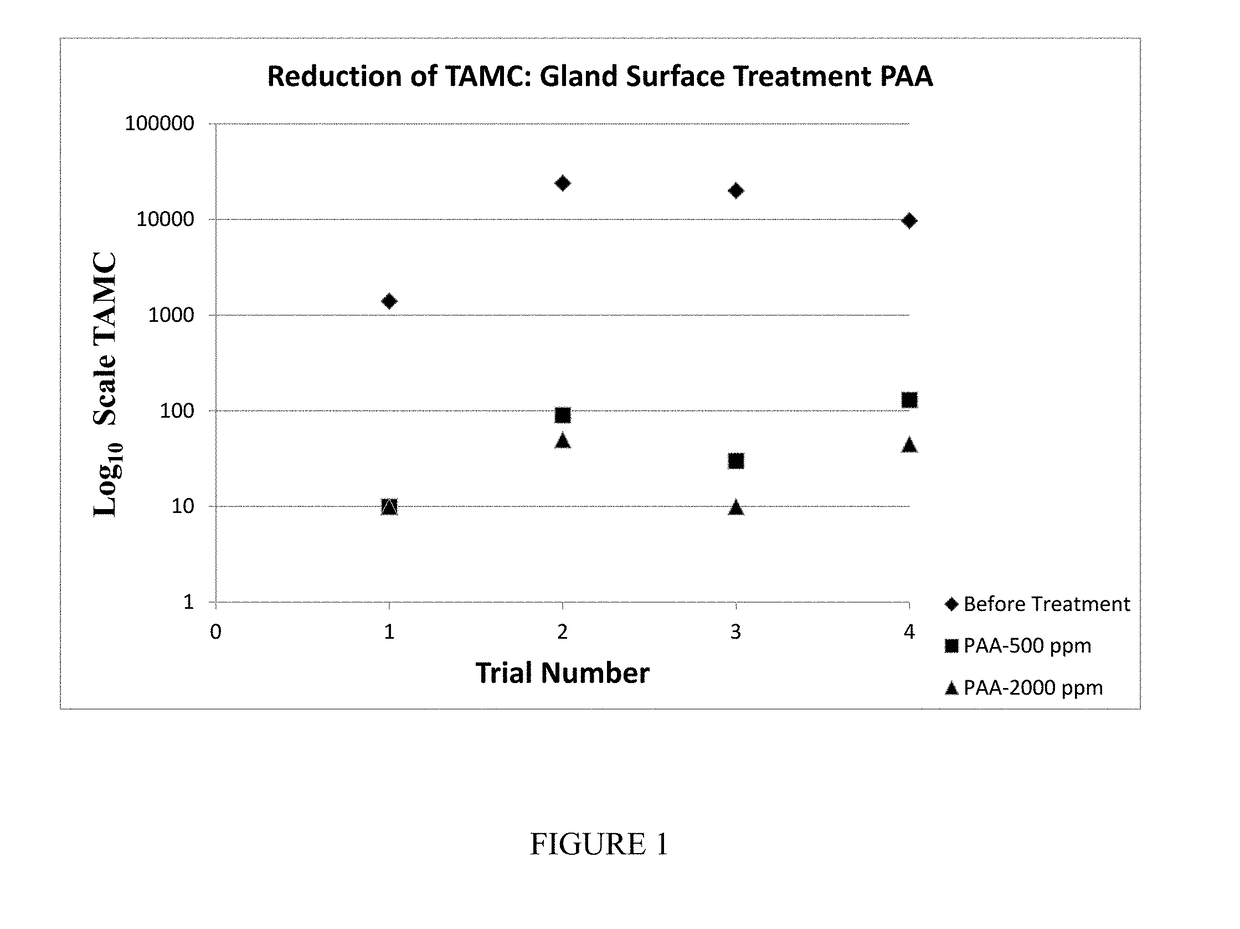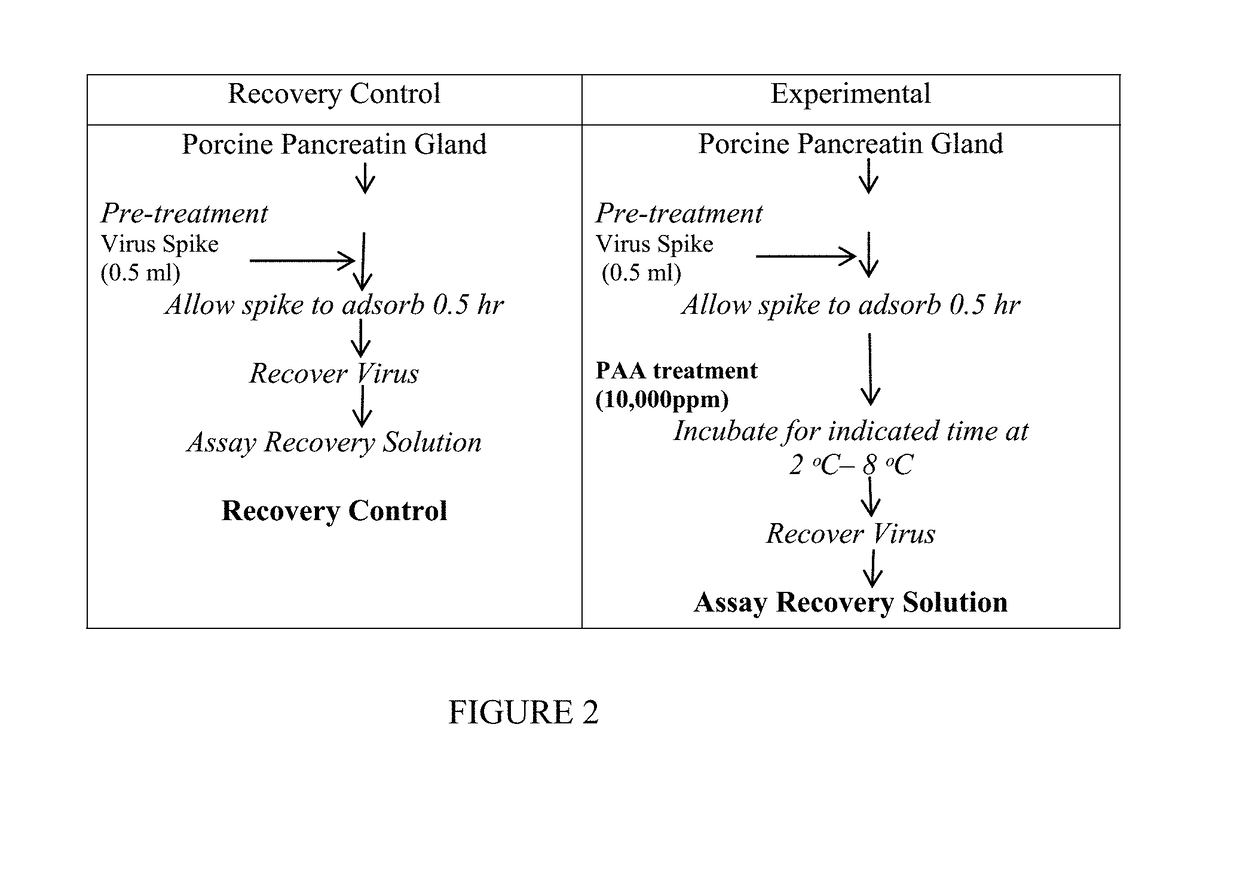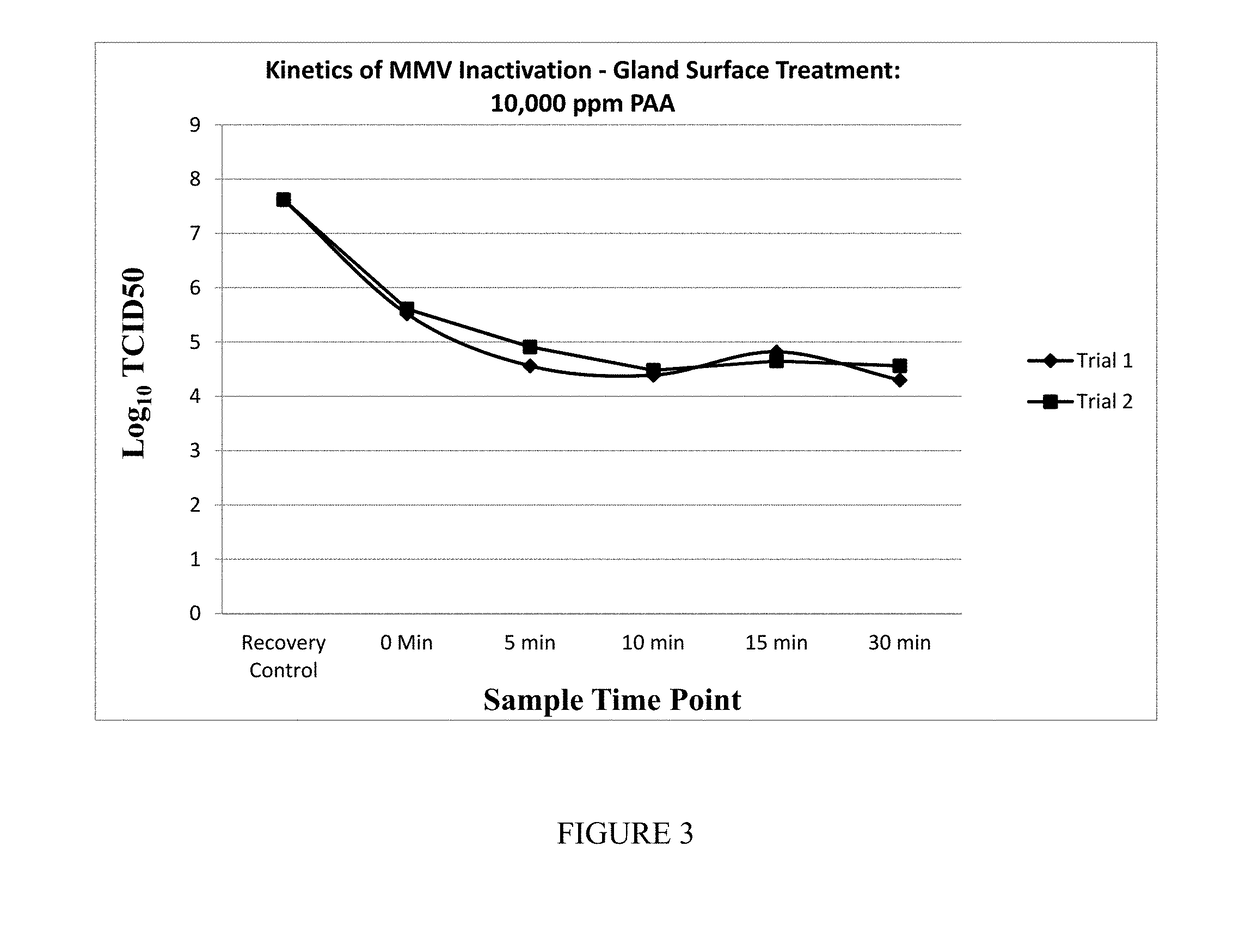Method for reducing or inactivating viral and microbial content in the processes for the manufacture of pancreatin
a technology of pancreaticin and microbial content, applied in the field of pancreatin, can solve the problems of not producing any toxic compound or residue, and achieve the effect of reducing or inactivating microbial and viral contamination
- Summary
- Abstract
- Description
- Claims
- Application Information
AI Technical Summary
Benefits of technology
Problems solved by technology
Method used
Image
Examples
example 1
[0069]For the preparation of pancreatin, 3 kg thawed whole porcine pancreas glands and 3 kg of porcine pancreas glands cut into approximately 2-inch strips were submerged in two different concentrations of PAA, 500 ppm and 2000 ppm for 10 and 15 minutes at room temperature (18-22° C.). Treated glands were rinsed with process water and placed into a sterile sample bag and stored at −20° C. for freezing not less than 12 hours. A total of 6 samples were tested per run. The preparation was executed 2 times. The second execution did not include strip glands because it was observed in the first execution that the strip glands became too intractable for further processing.
[0070]1. Whole gland (A)—500 ppm;
[0071]2. Whole gland (B)—2000 ppm;
[0072]3. Strip gland (A)—500 ppm;
[0073]4. Strip gland (B)—2000 ppm;
[0074]5. Whole gland (C)—No treatment-Control;
[0075]6. Strip gland (C)—No treatment-Control. For all result see Tables 1 and 2.
[0076]After treatment, glands were processed to obtain pancrea...
example 2
[0081]For the preparation of pancreatin, 3 kg thawed whole glands and 3 kg of milled gland were submerged in two different concentrations of PAA, 500 ppm and 2000 ppm for 10 and 15 minutes at room temperature (18-22° C.). Treated glands were rinsed with purified water and placed into a sterile sample bag and stored at −20° C. for freezing not less than 12 hours. A total of 6 samples were tested per run. The preparation was executed 2 times. Milled glands were difficult to process due to slurry being formed after PAA treatment. The second execution did not include milled glands.
[0082]1. Whole gland (A)—500 ppm;
[0083]2. Whole gland (B)—2000 ppm;
[0084]3. Milled gland (A)—500 ppm;
[0085]4. Milled gland (B)—2000ppm;
[0086]5. Whole gland (C)—No treatment-Control;
[0087]6. Milled gland (C)—No treatment-Control. For all results see table 3 and 4.
[0088]After treatment, glands were processed to obtain pancreatin powder as described in example 1 with additional steps of the method of the inventio...
example 3
[0092]Measuring Viral Infectivity Activity: The activity of viruses in the initial and treated pancreatin can be performed by any method known in the art. Preferably, the viral infectivity of one or more viruses is measured in the treated pancreatin. In one embodiment, the viral infectivity of PCV2, PPV and / or other viruses are measured.
[0093]In one embodiment, the infectivity assay uses cell cultures growing in tissue culture wells to which samples are applied and infection of the cells are measured.
[0094]Pancreatin API samples were manufactured with pancreatin whole gland treated with 500 ppm and 2000 ppm PAA solution following the manufacturing process. The test samples listed in Table 5 were pancreatin API samples dissolved in Dulbecco's Phosphate buffer saline (PBS) with Mg2+ and Ca2+ to generate a 10% suspension used to determine the titer of infectious Porcine circovirus type 2 (PCV 2) by a cell based in vitro assay using PK-13 cells (porcine kidney cells). The test items ana...
PUM
| Property | Measurement | Unit |
|---|---|---|
| temperature | aaaaa | aaaaa |
| temperature | aaaaa | aaaaa |
| size | aaaaa | aaaaa |
Abstract
Description
Claims
Application Information
 Login to View More
Login to View More - R&D
- Intellectual Property
- Life Sciences
- Materials
- Tech Scout
- Unparalleled Data Quality
- Higher Quality Content
- 60% Fewer Hallucinations
Browse by: Latest US Patents, China's latest patents, Technical Efficacy Thesaurus, Application Domain, Technology Topic, Popular Technical Reports.
© 2025 PatSnap. All rights reserved.Legal|Privacy policy|Modern Slavery Act Transparency Statement|Sitemap|About US| Contact US: help@patsnap.com



